Turkish delicacies have been littering the menus of restaurants all over the globe, rich and delicious but not very spicy. The European destination’s rich and diversified gastronomy is largely due to its terrain, which spans over 300,000 square miles. Plateaus and plains with lush soil, snow-capped mountains, and fast-flowing rivers all contribute to a rich and diverse table. The Ottoman cuisine, best Turkish food, is a classic Turkish culinary menu noted for its meat-filled skewers, but there’s a lot more to it than that.
Whether it’s the main course, sweets, appetizers, or juices, Turkish cuisine will delight your taste senses in such a way that you’ll not only be delighted, but also desire more. As a result, we’ve compiled a comprehensive buffet from the vast world of Turkish delights for you to choose from. There’s more to Turkish cuisine than koftas, kebabs, and doner kebabs. You may not be able to pronounce the meals’ names, but you will like their flavour.
Saksuka
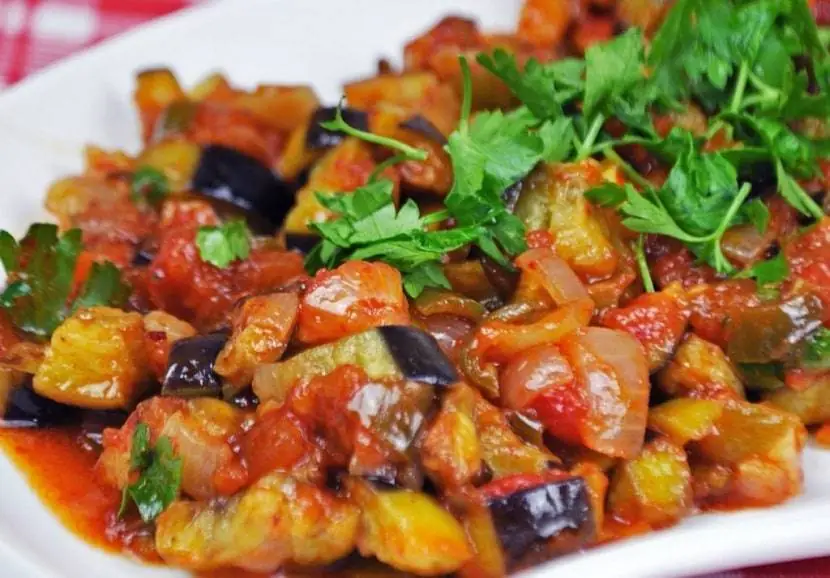
Turkish cuisine includes a wide variety of vegetable dishes characterized as zeytinyagli yemegi, or olive oil-cooked foods. Green beans, artichokes, and, of course, eggplants make up the majority of the dishes. Sasuka is one of the most delicious eggplant dishes. Silky purple-skinned green meat cubes are cooked with zucchinis, garlic, tomatoes, and chilli, the amount of which differ based on where it’s made in Turkey. This is one of the most popular Turkish food items.
Ezogelin Corba
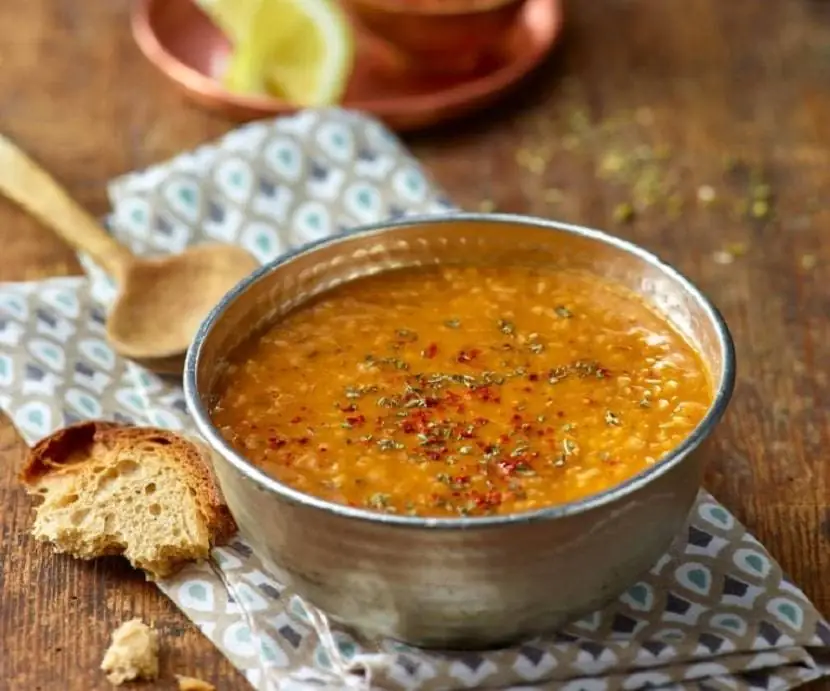
As per tradition, this dish was created by Ezo, a disgruntled wife who was attempting to win over her mother-in-law through her stomach. She made a fiery soup with red lentils, domato salca (sweet or hot tomato paste), grated fresh tomatoes, and onions, garnished with dried mint and pul biber (chilli flakes). There’s no indication it worked, but ezogelin is still the food of choice for brides-to-be, hailing from a little village near Gaziantep.
Mercimek Kofte
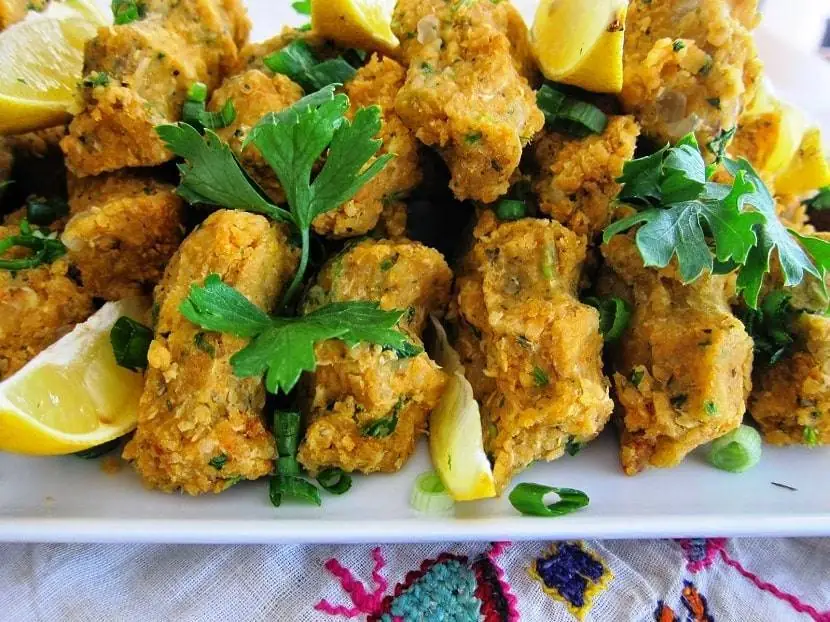
Mercimek kofte, one of the best Turkish food items, also nicknamed as belluh in Diyarbakir, is a vegetarian treat. They come in handy bite-sized quantities and are made with red lentils, fine bulgur, salt, finely chopped onion, scallions, tomato, aci biber salca (hot red pepper paste), and crushed cilantro. Simply place one of these flavorful nuggets on a lettuce leaf, squeeze some lemon juice on top, roll it up, and eat.
Yaprak Dolma
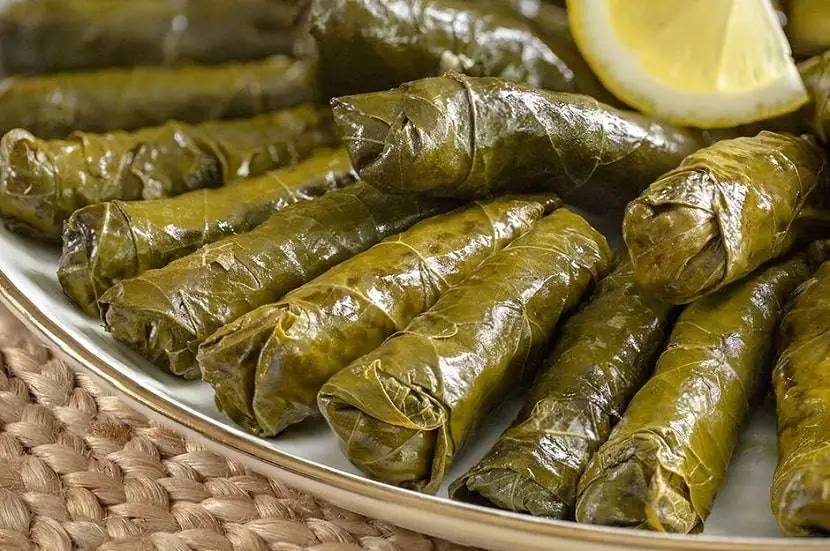
Rice is prepared with tomatoes, a bunch of parsley, onion, garlic, tomato paste, olive oil, black pepper, salt, and water in the Isparta form of yaprak dolma. A tablespoon of the mixture is spooned onto a vine leaf, folded in half, and rolled into neat small cylinders by hand. While most street stalls sell leaves, the nicest ones come from a neighbor’s tree, which are frequently gathered at midnight. Yaprak dolma, one of the best Turkish delicacies, is a type of Turkish Aegean cuisine that includes a dash of cinnamon as a homage to the Rum people, who are Greeks who were born in Turkey.
♦ 2 Days Cappadocia Tour From Istanbul
Iskender Kebab
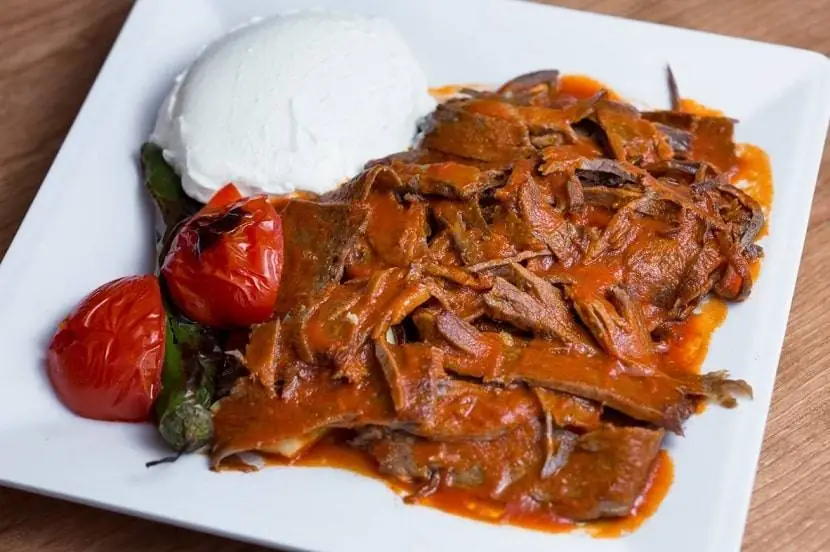
Bursa, in northwest Turkey, is known for three things: silk, the Uludag ski fields, and a sort of kebab known as Iskender. According to legend, this dish was first prepared for labourers in the city’s Kayhan Bazaar in 1867 by a gentleman with the same name. Thin slices of doner meat are drenched in freshly produced tomato sauce, baptised with a sprinkle of sizzling melted butter, and presented with tangy yoghurt, grilled tomato, and green peppers.
Inegol Kofte
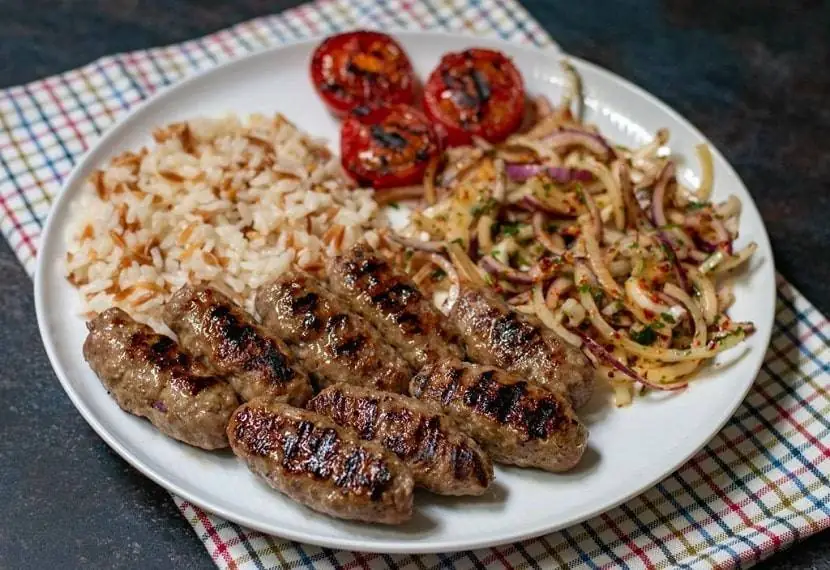
In Turkish cuisine, meatballs are much more than just meat balls. Each style offers its own slice of history to the table. One of the most well-known is Mustafa Efendi’s Inegol kofte. He was born in Bulgaria and moved to Inegol in northwest Turkey in the nineteenth century. In contrast to other Turkish kofte, his recipe merely calls for ground beef or lamb and breadcrumbs, which are seasoned with onions. This dish is considered among the most popular Turkish food items.
Cag Kebab
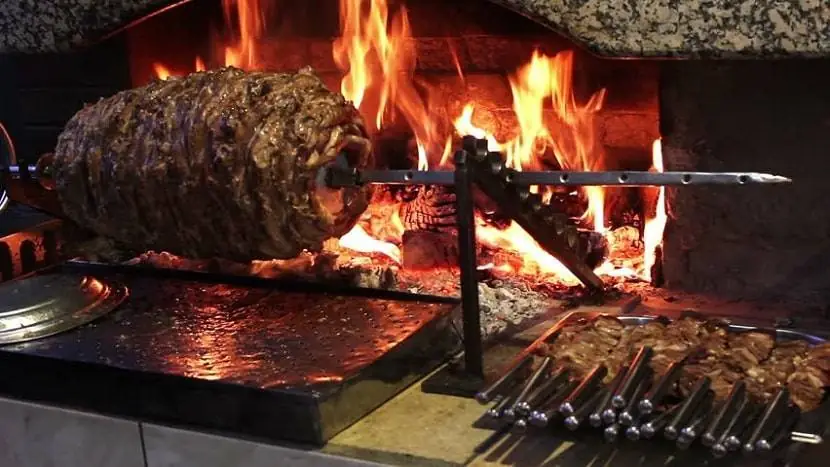
The inhabitants of Erzurum are serious about their meat. They’re willing to wait over 12 hours for a sliver of hot and delicious lamb cag kebab. The beef is first marinated for half a day with a mixture of onions, salt, and black pepper. The meat is then threaded onto a long skewer and roasted over a wood fire horizontally. Cag kebab, one of the best Turkish food, is also offered wrapped in flat lavas bread with slices of tomato, white onion, and long thin green peppers named sivri, which are delicious on their own.
Hamsili Pilav
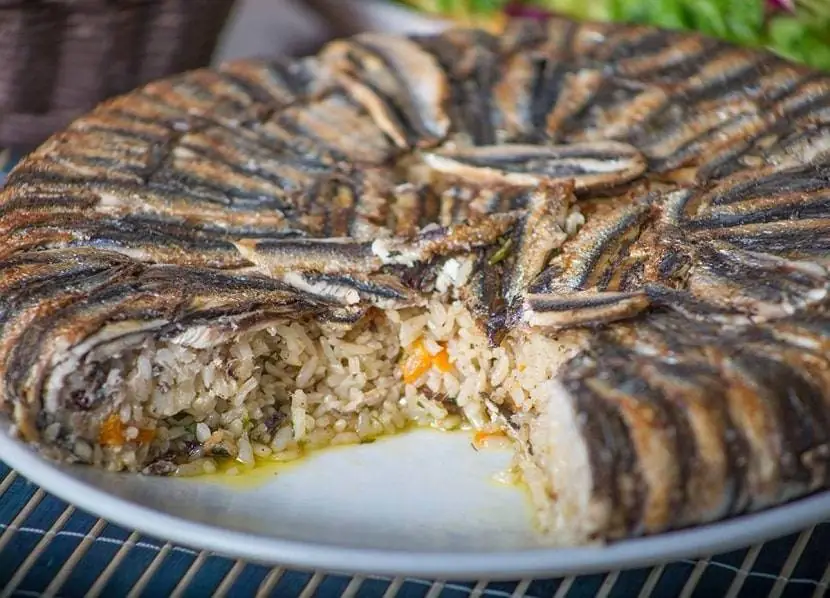
Hamsi, sometimes known as European anchovies, is a common ingredient in Turkish Black Sea cuisine. The skinny fishes are prepared with rice in the city of Rize to form Hamsili Pilav – one of the best Turkish delicacies. This meal is created with a stock made with fried onions, butter, peanuts, Turkish allspice, and raisins, and fresh parsley and dill. After that, filleted anchovies are laid over the rice, and the whole thing is baked.
Perde Pilav
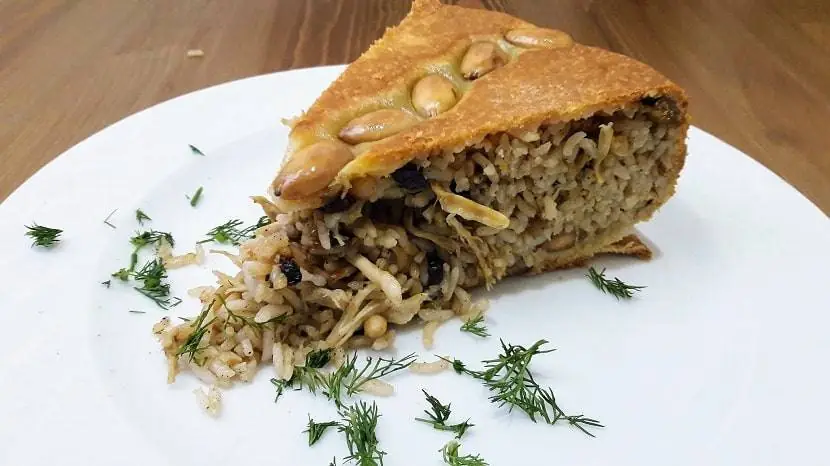
Perde pilav, or curtain rice, one of the most popular Turkish food items, is a rice-based meal wrapped in a rich buttery dough and baked in an oven before being served hot. Perde pilav is a dish made with chicken, currants, almonds, pine nuts, and butter that is seasoned with salt, oregano, and pepper and served during weddings. The dish’s shape is said to reflect the birth of a new home, with the rice representing fertility and the currants representing future offspring.
Manti
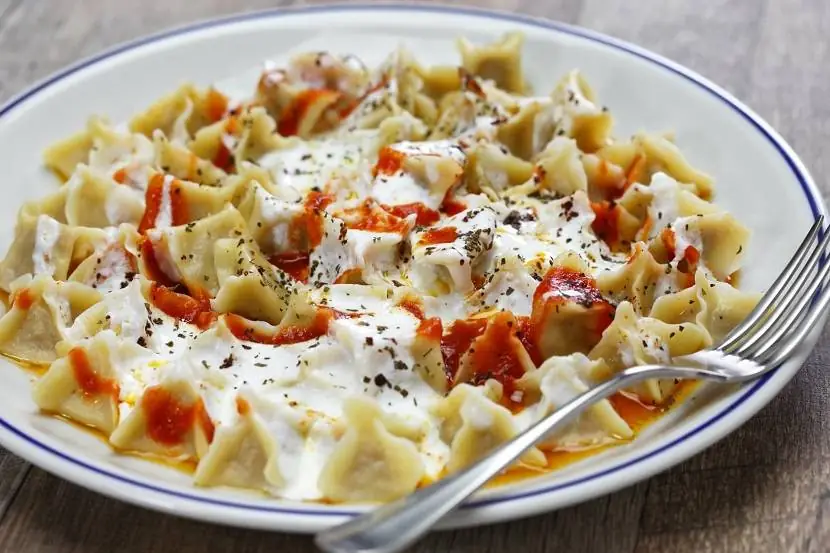
The most renowned variety of manti are those made in Kayseri, which are little squares of dough with varied fillings. A teaspoon of mince is packed into a little bundle in this central Anatolian variant, but cheese is used elsewhere. The mantis are boiled and then topped with yoghurt and pul biber (chili flakes). According to tradition, a good Turkish housewife can make them so little that 40 of them can fit on a single spoon.
♦ 4 Days Turkey Tour – Cappadocia Ephesus Pamukkale Tour
Testi Kebab
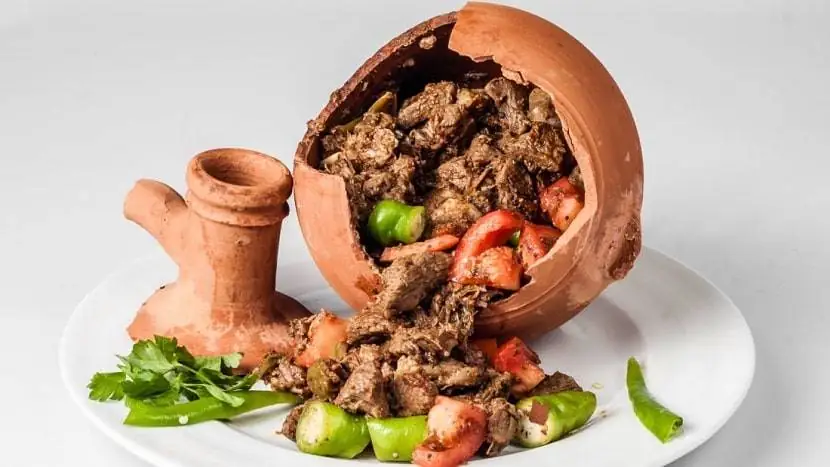
Pottery created in Avanos with red clay from the famed Kizilirmak River is a specialty of the Nevsehir region. The steak, tomatoes, bell pepper, garlic, and a knob of butter are then added to the clay jug. Before being placed in a wood-burning oven, the jug’s entrance is sealed with a peeled potato slice and wrapped in alfoil. Once the contents are ready, the cook must break open the meal by holding the alfoil-covered top in one hand and a little hammer in the other.
Gozleme
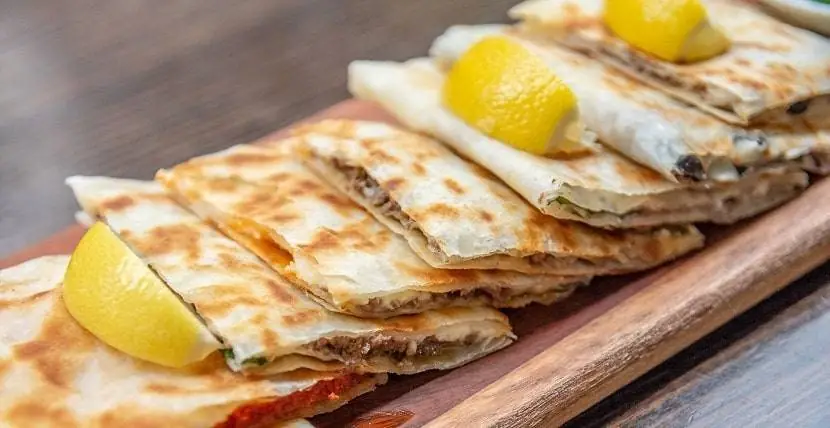
Gozleme – the best Turkish food – are flat savoury pockets commonly filled with salty white cheese, spinach, or minced beef. They are also known as sac boregi, pastry fried on a sac, a heated convex metal plate. Although it is commonly thought of as a village food, rolling out the paper-thin dough without ripping it requires skillful handling. The name gozleme is thought to have originated from the dark spots that emerge as the pastry cooks and absorbs the oil on the sac, forming “eyes.”
Pide

Pide is one of the most popular Turkish food items, with some of the best coming from the Black Sea region. Dough balls are stretched out into an extended foundation and filled with a variety of ingredients in this dish. Sucuklu yumurta, a spicy Turkish sausage and egg mixture with kasar (yellow sheep cheese), is the most famous, although ispanakli kasar, spinach with cheese, is also delicious. The crust is what makes pide so good.
Su Boregi

Borek, a savoury pastry formed by layering sheets of yufka, a fine filo-like dough, is a staple of central Anatolia’s high plateaus. It was carried to Turkey hundreds of years ago by nomadic herders, and several types may be found all across the country as well as Central and Eastern Europe. Su boregi, or “water borek,” is the most prevalent, and it’s made with white cheese, butter, olive oil, and salt.
Simit

Simit, one of the best Turkish food items, is the energy that keeps Turkey moving if a country can be said to run on its stomach. They’re offered everywhere: on the street, in bakeries and cafes, at tram, railway, and metro stations, and even on ferries, by street vendors with baskets or carts. It’s thought that simit were produced in Suleyman the Magnificent’s palace kitchens in the 1500s, but no official documents exist. The Oxford English Dictionary officially recognised the word simit in October 2019, and the rest, as they say, is tradition.

